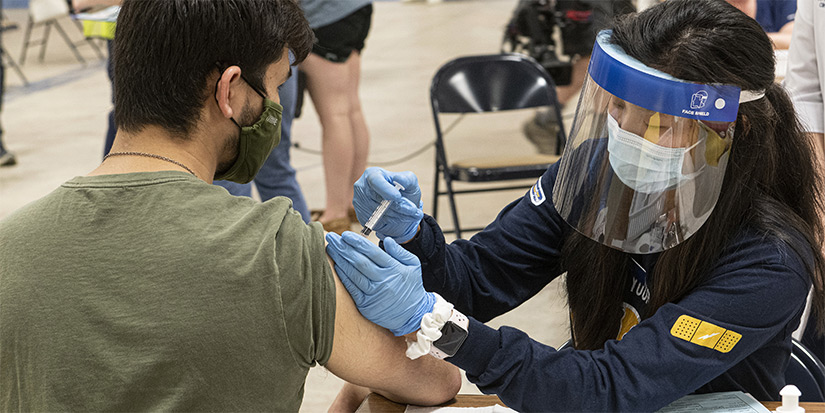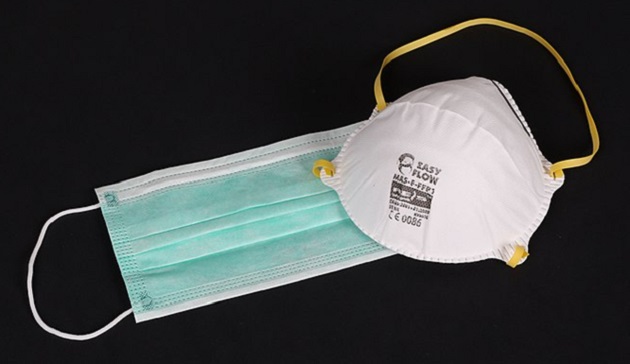
Vaccines and Inflation Risk
-
 Patrick Watson
Patrick Watson
- |
- May 18, 2021
- |
- Comments
Yay, no more masks… sort of. New CDC guidance says the 37% of Americans who are fully vaccinated can safely stop masking most of the time.
But CDC also says masking should continue in healthcare facilities, on planes and other public transport, and in businesses that require them. And masks are still recommended for the unvaccinated population—which (for now) still includes almost all children under age 12.
So, a minority of the population can now ditch their masks sometimes, though not always and everywhere. This is good news. Time and experience are showing the vaccines to be very effective, so we can start getting back to normal life. But we aren’t there yet.
Some think CDC’s real goal is to encourage the vaccine-hesitant by giving a privilege to those who had their shots. It may not work that way. But their move is also interesting because it shows something about risk—both health risk and economic risk.

Source: Wikimedia Commons
Success for Some
CDC—the Centers for Disease Control and Prevention—focuses on keeping the whole population safe. That’s not the same as keeping individuals safe.
A policy can reduce overall risk while simultaneously raising risk within certain groups. “Success” at the population level doesn’t necessarily mean everybody wins.
The same is true for monetary policy, tax policy, and pretty much everything government does. Consequences seldom hit everyone equally.
Like what you're reading?
Get this free newsletter in your inbox regularly on Tuesdays! Read our privacy policy here.
With that in mind, consider how this masking policy change will affect risk.
The vaccines look highly effective. Serious side effects happen but are rare. Since getting COVID-19 can be serious, too, the rewards of being vaccinated seem to outweigh the risks. And ditching masks makes it even more appealing.
The problem is that businesses and public venues have no practical way to know who is vaccinated. Walmart (WMT) and many other large retailers are moving to an honor system that “asks” unvaccinated people to please wear masks.
How many will? I suspect not many.
So the result will be more indoor contact between unmasked, unvaccinated Americans. I’m not a physician, but that seems like a problem—at least for those people. Vaccinated persons in the same rooms should still be relatively safe (though not 100%), even without masks. The others are taking a bigger risk.
We’ll know in a few weeks how this goes. I’m concerned about the 8 million or so Americans over age 65 who haven’t had even one vaccine dose. If infected, they are vulnerable to serious illness or death, and their risk of infection may be rising. Younger people aren’t necessarily in the clear, either.

Source: Picpedia
Collective Decisions
Meanwhile, inflation worries dominate the financial news. The Consumer Price Index just posted its biggest 12-month change since 2008. We see higher prices in food, energy, housing, and other things.
Just as CDC’s job is to manage the nation’s disease risk, the Federal Reserve is supposed to manage our inflation risk. Yet Fed officials seem unconcerned. They think a little inflation is actually good, and they don’t believe it will rise too much.
Inflation risk is certainly rising. But as with COVID-19 risk, it doesn’t fall equally on everyone. Indexes like the CPI try to measure impact on the “average” household’s cost of living when very few households are average. Spending patterns vary widely depending on your income, location, and lifestyle.
That means your inflation risk may be higher or lower than the national inflation risk the Fed is watching.
Like what you're reading?
Get this free newsletter in your inbox regularly on Tuesdays! Read our privacy policy here.
This is partially in everyone’s own control. We can choose how we spend our money. We can demand higher wages. Business owners can raise prices. We can all substitute other products for more expensive ones. Our collective decisions have a feedback effect on the economy. Given time, they can send inflation back down.
Similarly, our collective decisions about the behaviors that spread COVID-19 affect public health. But there’s a key difference.
Choose Wisely
COVID-19 risk and inflation risk are both individual as well as collective risks. Your own choices matter, as do the choices of others, whom you probably can’t control.
Thought exercise: What if you could get a shot that protected you from inflation? It wouldn’t have to be perfect. Just 90% effective would be great.
The shot might have side effects. For example, clinical trials show a small percentage of inflation vaccine recipients experience temporarily higher avocado prices.
That’s inconvenient if, like me, you enjoy guacamole. But I’m pretty sure most people would take the shot anyway.
But alas, the inflation vaccine is hypothetical. The COVID-19 vaccines are real. In the United States, at least, they are now widely available to everyone age 12 and over at no charge. Yet almost half the eligible population hasn’t had even one dose.
Yes, some people lack transportation or face other barriers. We need to help them. But we’ve almost reached the point where those who aren’t vaccinated are choosing to stay vulnerable themselves and possibly infect others, too.
This choice affects both their individual health and overall public health. It affects the economy, too... for everyone.
If you’re in that group, I hope you choose wisely.
Like what you're reading?
Get this free newsletter in your inbox regularly on Tuesdays! Read our privacy policy here.
See you at the top,

Patrick Watson
@PatrickW
P.S. If you like my letters, you’ll love reading Over My Shoulder with serious economic analysis from my global network, at a surprisingly affordable price. Click here to learn more.

 Patrick Watson
Patrick Watson
